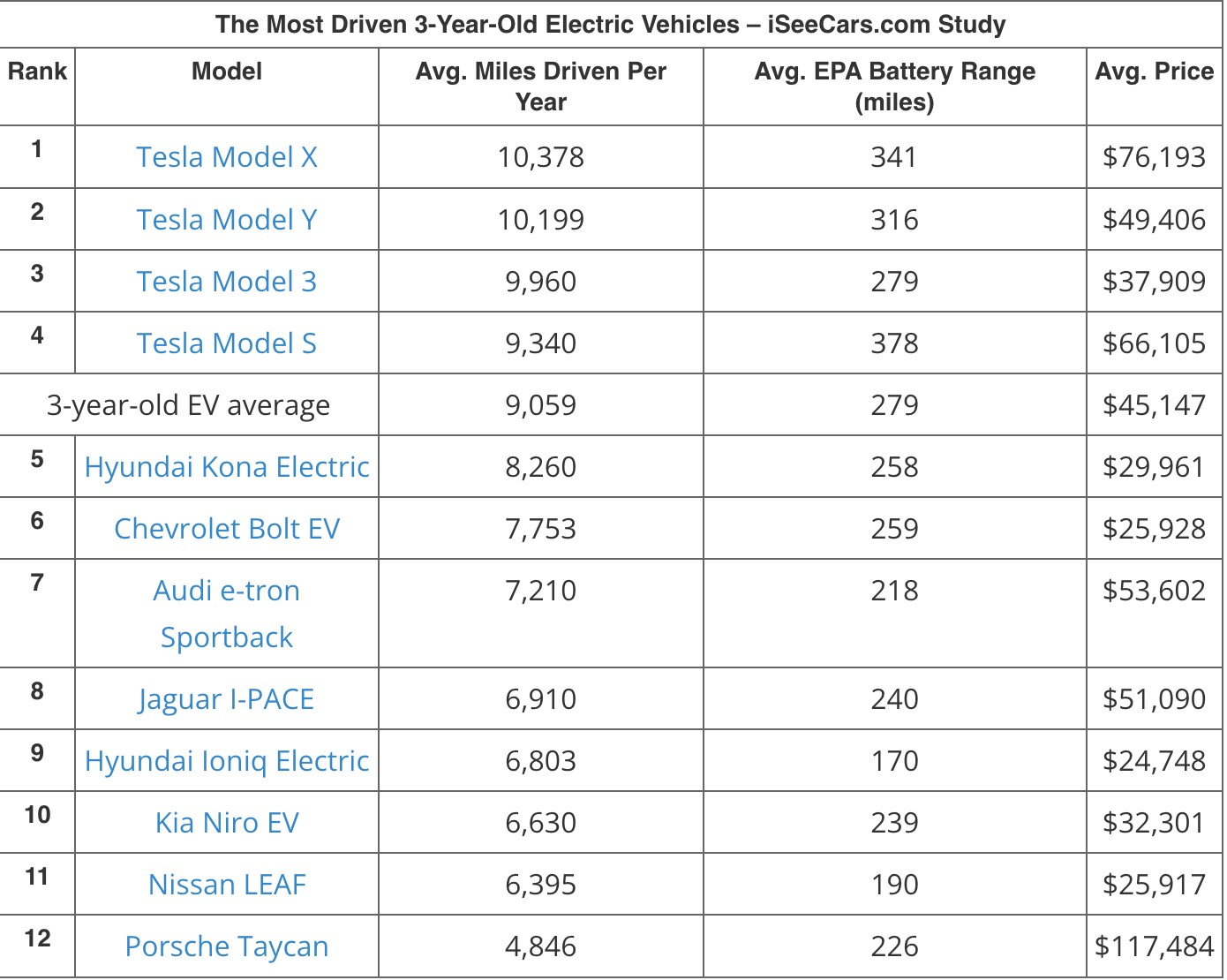Tesla dominated the top four spots in a new survey from iSeeCars, which showed the twelve most-driven electric vehicles on average per year, with the Model X leading the way.
The Model X averaged 10,378 miles per year, leading the Model Y with 10,199, the Model 3 with 9,960, and the Model S in fourth with 9,340.
It appears EV drivers prefer a larger cabin for the more miles driven in a given year, as the two Tesla models that led the pack were an SUV and a Crossover, respectively.
Interestingly, the Model Y and Model 3, which are Tesla’s two most popular vehicles, were unable to out-mile the Model X, which appears to be the most suitable for longer distances.
Among the rest of the data is the Hyundai Kona in 5th (8,260), Chevrolet Bolt in 6th (7,753), and the Audi e-tron Sportback (7,210).

Credit: iSeeCars
The Porsche Taycan was the least-driven EV in the survey, placing 12th with only 4,846 miles driven per year, which makes sense and aligns with its average price tag of $117,484. Many people wouldn’t drive something as sporty for long distances.
However, the true factor does not appear to be space in the cabin, but range.
Analyst Karl Brauer said that range anxiety “continues to impact how consumers utilize their EVs. Looking at three-year-old electric cars, we see EV owners willing to drive an additional 23 miles per year for every additional mile of range their vehicle offers. That means EVs, on average, need an additional 161 miles of range to get them to the 12,578-mile annual driving distance we see from traditional, gasoline-powered vehicles.”
It also has to do with overall infrastructure.
Gas-powered vehicle drivers have plenty of options for refilling, but EV drivers aren’t as lucky, at least not yet.
Tesla drivers enjoy the most robust infrastructure in terms of EV charging, and a vast majority, over 99 percent, of U.S.-based chargers are specific to Tesla drivers. This presents a great advantage for Tesla owners, which seems to be the biggest factor in this study.
“In a gasoline car, regardless of how far you’re going, there are always plenty of refueling options, and the process takes five to ten minutes. Until EVs can offer that level of convenience at a comparable cost, they will be at a distinct disadvantage in terms of use and market demand,” Brauer said.
Tesla can offer the most comparable experience in terms of recharging or “refueling,” which is most likely why it dominated yet another survey.
“Tesla drivers come the closest to matching the driving behavior of traditional car owners,” Brauer added. “Without Tesla, the average miles per year for EV drivers would drop from 9,059 to 6,719. It’s also interesting to see the Porsche Taycan, a direct competitor to the Model S, being the least-driven electric car.”
I’d love to hear from you! If you have any comments, concerns, or questions, please email me at joey@teslarati.com. You can also reach me on Twitter @KlenderJoey, or if you have news tips, you can email us at tips@teslarati.com.

